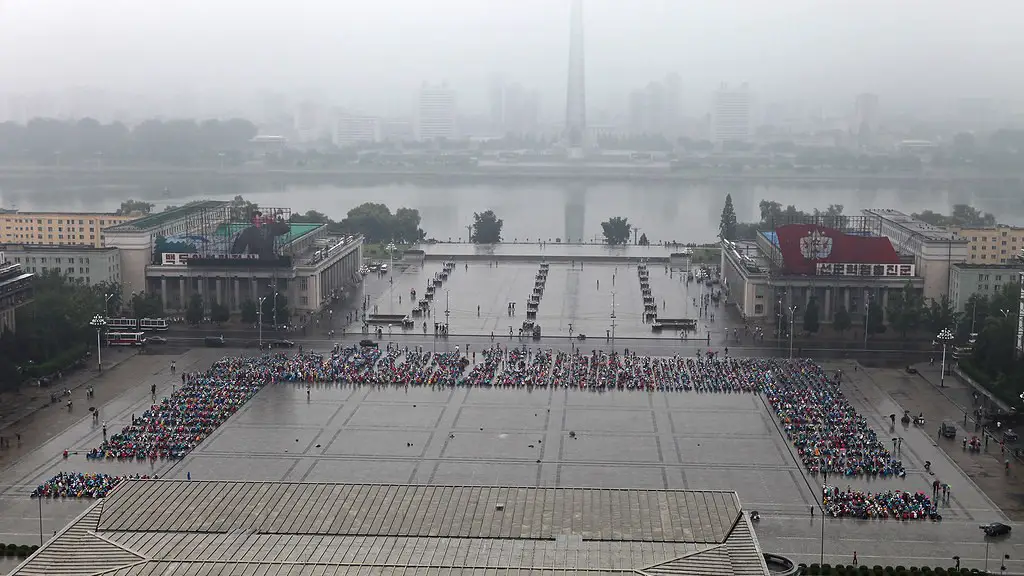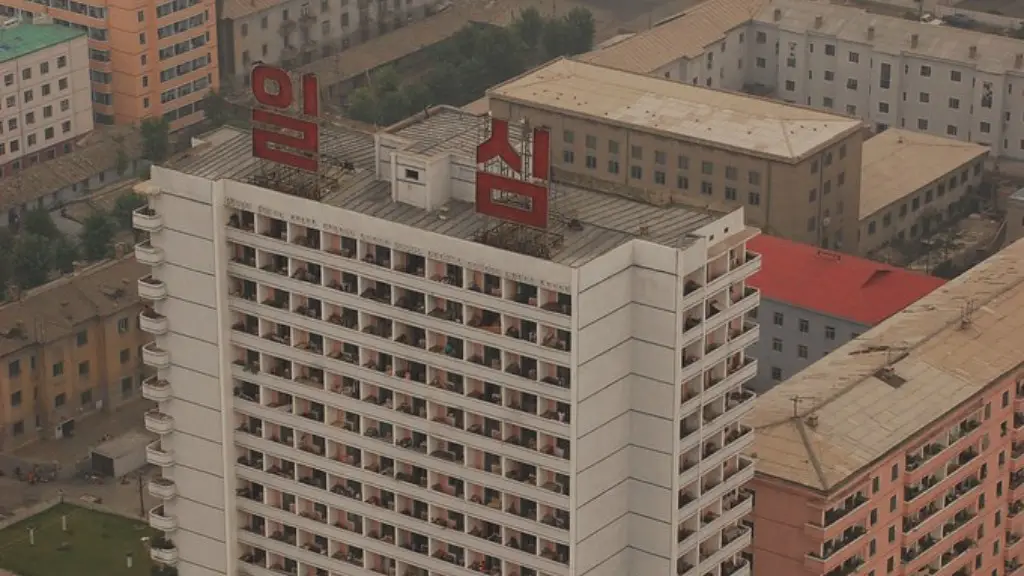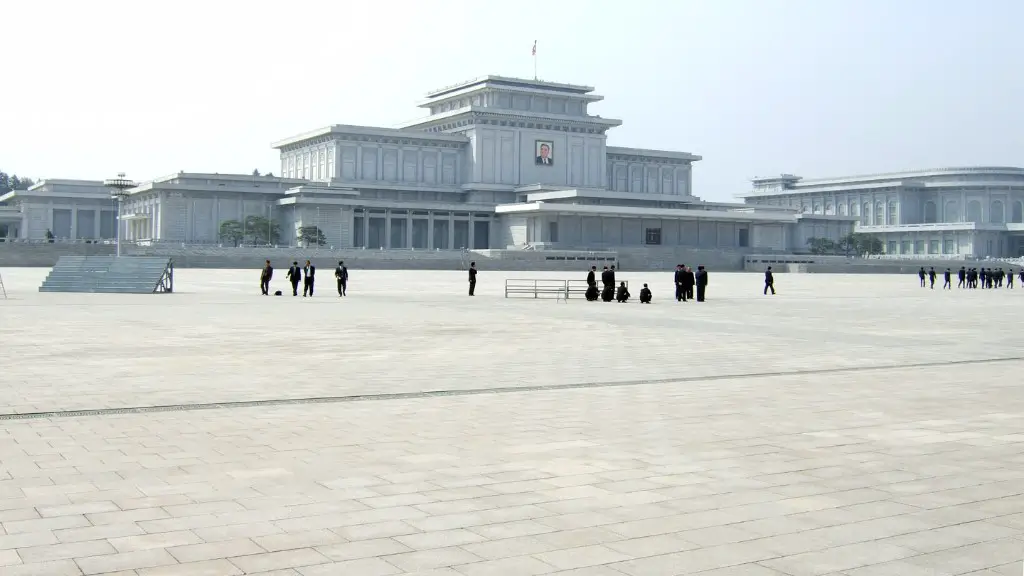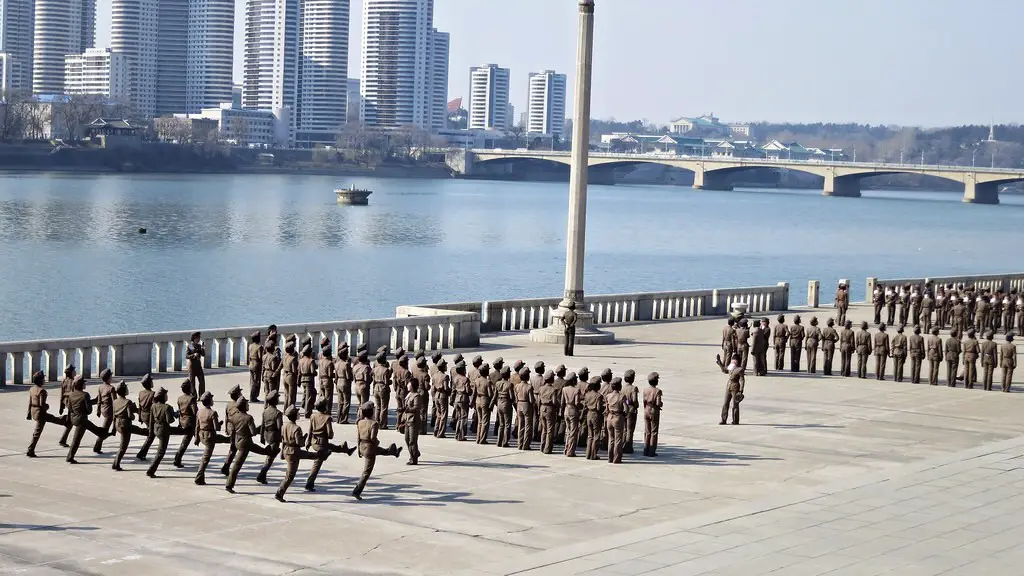North Korea is no stranger to test-firing missiles. Between 2006 and 2017, the country tested more than 80 medium and long-range ballistic missiles, as well as a number of medium-range cruise missiles. But when did North Korea last test a missile?
According to research from the Stockholm International Peace Research Institute (SIPRI), the last missile test-fire by North Korea was on 28 November 2017. The test was the 18th ballistic missile the country had fired in 2017, a total of 19 if cruise missile tests are included.
The missile, known as the Hwasong-15, was launched from Pyongsong, a town close to North Korea’s capital, Pyongyang. It flew 950km before coming down into the sea east of the Korean Peninsula. According to the North Korean state media, the missile reached an altitude of 4,475km. This meant it was much higher than the International Space Station, the Tiangong-2 space lab run by China or any other satellite.
The test was strongly condemned by the UN Security Council, who issued a press statement calling on North Korea to “cease all further testing”. Soon afterwards, North Korea declared it had completed its “state nuclear force”, adding that further missile tests were unnecessary.
Expert analysis of the Hwasong-15 suggests that it is powerful enough to hit targets anywhere in the United States. Michael Duitsman, a research associate at the Center for Nonproliferation Studies, told CNN that the missile’s range was almost “inconceivable” before and warned that the US was no longer safe from North Korean missiles.
However, most experts believe it is highly unlikely that North Korea will launch a nuclear attack on the US. Professor John Nilsson-Wright, Senior Research Fellow for North East Asia at Chatham House, believes the country is more likely to use its nuclear capabilities as a bargaining chip in negotiations with the US.
South Korean Response
South Korea, the country most immediately threatened by North Korea’s missile tests, has taken a proactive approach to dealing with the threat. In 2016, it announced the deployment of its own “Kill Chain” system, designed to detect and intercept North Korean missiles.
The South Korean Government has also taken a number of diplomatic initiatives, including proposing a joint military exercise with the US. This would involve South Korean and US troops training in South Korea and would demonstrate a “strong, unified response” to any military threats from North Korea.
In October of 2017, Seoul and Washington agreed to deploy the US-built Terminal High Altitude Area Defense (THAAD) system in South Korea. This powerful missile-defense system is designed to intercept and destroy short, medium, and intermediate range ballistic missiles.
Finally, South Korea has also proposed talks with North Korea. So far, North Korea has refused, but South Korean officials remain adamant that negotiations are the best way to resolve the crisis.
US Response
The US has responded to North Korea’s missile tests in a variety of ways. In 2017, US President Donald Trump threatened to “totally destroy” North Korea if it continued to threaten the US. Shortly afterwards, the US imposed further economic sanctions on North Korea.
The US and its allies have also pursued a strategy of “maximum pressure” on North Korea, attempting to isolate it diplomatically and economically. The US State Department has imposed travel bans on North Korean officials and imposed restrictions on the country’s exports.
The US has also ratcheted up its military presence in the region with a series of joint military exercises with South Korea and Japan. In 2017, the US deployed three aircraft carriers to the region as a show of force, while stealth fighter jets have been deployed to South Korea.
Despite the pressure, North Korea has continued to test-fire missiles. In 2017, the country flew several missiles over Japan, the longest of which had a range of 3,400km. As of January 2018, it had not conducted any further missile tests.
China’s Role
China is arguably the most influential actor in the North Korean crisis. As North Korea’s closest ally and major trading partner, China has a unique influence over Pyongyang.
For years, China has taken a “laissez-faire” approach to North Korea, showing little interest in pushing Pyongyang to abandon its nuclear program. However, in December of 2017, China voted unanimously in favor of a new round of UN sanctions on North Korea.
In late January 2018, Chinese President Xi Jinping and US President Donald Trump agreed to work together on resolving the North Korean crisis. Chinese Foreign Minister Wang Yi has stated that the Chinese government is willing to “make any effort” to peacefully resolve the crisis.
In his New Year’s address, North Korean leader Kim Jong-un said he was willing to send a delegation to the Winter Olympics in South Korea and to hold talks with Seoul. This could be the first step in a process of dialogue between the two Koreas.
Possible Outcomes
In the short-term, the most likely outcome is that North Korea will continue to test-fire missiles, albeit at a slower rate. It is highly unlikely that the country will use its nuclear capabilities to launch a first strike against the US or its allies.
In the long-term, there is a possibility that North Korea and South Korea could resume talks and move towards reunification. However, much will depend on the US and whether it is willing to accommodate North Korea’s demands.
It is also possible that the US and its allies will continue a policy of “maximum pressure” until North Korea agrees to abandon its nuclear program. This could lead to a more peaceful resolution, but it is also possible that it could lead to increased tensions in the region.
The situation in North Korea is complex, and it is difficult to predict how it will play out in the months and years to come. What is certain, however, is that the international community must remain vigilant and continue to search for ways to peacefully resolve the crisis.
International Community
The international community has taken a number of steps to address the North Korean missile crisis. In 2017, the UN Security Council imposed crippling economic sanctions on North Korea, banning exports of North Korean coal, textiles, and seafood.
President Trump also urged China, North Korea’s traditional ally, to put pressure on Pyongyang. In November 2017, the US and China imposed additional unilateral sanctions on North Korean banks, shipping companies, and individuals.
The US and its allies have also ramped up their joint military presence in the region. The US and Japan have recently agreed to a new set of defense guidelines, and the US has increased its military presence in the region.
However, there is still much that the international community can do to address the North Korean missile crisis. More stringent economic sanctions and increased military pressure could help to persuade North Korea to abandon its nuclear ambitions.
At the same time, dialogue is still possible. North Korea’s offer to send a delegation to the Winter Olympics is a hopeful sign for the future, and the international community should seize every opportunity to talk to Pyongyang.





